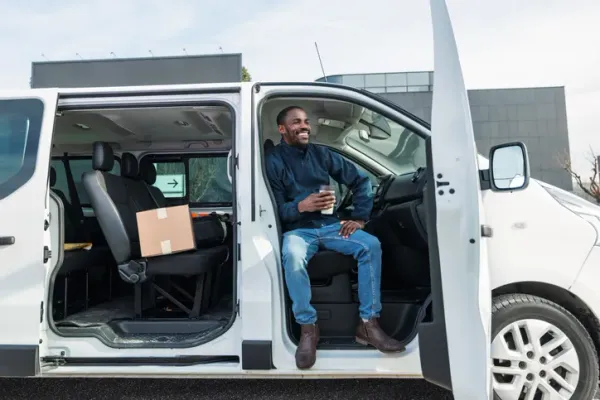The environmental benefits of ridesharing

How renting a car can improve the environment
It’s not a secret that cars do a lot of damage to our environment. They produce tons of toxic pollutants and chemicals that result in greenhouse emissions, acid rain, climate change, and significant water and air pollution.
This environmental damage also influences people’s health ranging from minor headaches to cancer to birth defects.
While it would not be practical to abandon cars as a means of transportation, there are ways to at least minimize the damage to the environment.
The concept of ridesharing provides a great opportunity to improve the current ecological situation.
What are the real environmental benefits of ridesharing? And why does owning a car do much more damage to the environment than renting one?
Let’s find it out!
Why is owning a car worse for the environment than renting?
A personal car is, of course, a privilege. However, it also does a lot of damage to the environment.
Here’s why.
As the number of cars on the roads keeps increasing, so does the amount of pollutant emission.
People keep buying personal cars, and by doing so they also contribute to environmental deterioration.
Consider the statistics below taken from statista.com. It is obvious that the number of vehicles is steadily rising.
This already puts a great burden on the Earth, and there is no sign that the growth will stop.
The research company Bernstein predicts that by 2040 the total number of cars in use worldwide will almost double and may even exceed 2 billion.
As more people buy and use personal cars, the damage will be even more serious than it is now.
Increasing levels of air pollution accelerate global warming.
Passenger vehicles, along with light and heavy trucks, are considered to be the main sources of air pollution.
According to the U.S. Environmental Protection Agency “Inventory of U.S. Greenhouse Gas Emissions and Sinks,” the transportation sector of the United States, including all the transportation means, produces approximately 30% of all U.S. greenhouse gas emissions.
The National Oceanic and Atmospheric Administration has estimated that the amount of global carbon dioxide (CO2) emissions in the atmosphere has reached a tipping point.
Global atmospheric temperatures are considered to be higher than ever before. And with the increasing levels of greenhouse emissions, global warming will continue to increase.
Humanity is already dealing with disastrous consequences of global warming including the significant rise of sea levels, the melting of glaciers, and more. These consequences will become even worse if the number of cars is not decreased.
Many cars require a lot of fuel, so non-renewable energy sources are being quickly exhausted.
The consumption of oil is also steadily increasing. Oil is a non-renewable source of energy, and we may soon run out of it.
The U.S. Energy Information Administration estimates that in 2016 the United States consumed an average of approximately 19.63 million barrels of oil per day.
According to BP’s annual report as of 2013, the Earth has a reserve of oil that at the current pace of extraction will only last for another 55 years.
Oil should not be wasted but should instead be used effectively.
It is impossible to stop using cars. But, it is obvious that the environment is already in very bad shape, and it will require great changes.
Let’s take a look at how ridesharing services can help.
How does ridesharing contribute to the improvement of the environment?
We can expect real changes in the world of ridesharing as this market is rapidly increasing.
PricewaterhouseCoopers predicts that by 2025 the global sharing economy will grow up to roughly $335 billion, compared to approximately $15 billion today.
Ridesharing can actually contribute to the improvement of the environment.
Here’s how.
Ridesharing decreases the use of cars and reduces car congestion.
Ridesharing services allow people to avoid purchasing a car, which results in a decrease in the overall number of cars on the road.
Consider the results of a study conducted by the Transportation Sustainability Research Center at the University of California, Berkeley. It states that for each car-sharing vehicle in use, there are on average from 9 to 13 fewer cars on the road.
This is because people want to avoid the high costs of car ownership. So, they either sell a car, or postpone buying one.
And it was also estimated that ridesharing helps reduce car emissions between 34% and 41% per year per each household using these services.
Ridesharing helps reduce air pollution.
Cars and light trucks contribute to air pollution the most. We’ve already seen that air pollution increases global warming
But, as we’ve found out, ridesharing helps reduce the number of cars, and consequently, fewer cars produce less carbon dioxide.
Consider the results of the same U.C. Berkeley study. According to it, each car owned by a ridesharing service such as Uber or Lyft removes between 5.5 to 12.7 tons of greenhouse gas emissions per year.
Scientists estimate that this contributed to the decrease of the total carbon dioxide emissions from cars by about 10%.
Thus, ridesharing can also help slow down global warming.
Ridesharing helps conserve non-renewable energy sources.
As you already know, the amount of oil left on the planet is decreasing rapidly. We should not only strive to conserve it, but also to use it effectively.
However, the 2015 Urban Mobility Scorecard published by INRIX and the Texas A&M Transportation Institute shows that traffic congestion can cause enormous fuel waste.
Travel delays caused by traffic congestion result in not only wasting about 7 billion extra hours in traffic jams but also burning more than 3 billion gallons of fuel.
So, as noted above, ridesharing helps significantly reduce car congestion. Fewer cars require less fuel and non-renewable energy sources can be conserved for longer.
Conclusions
Vehicles significantly influence the environment. Although people can’t stop using cars completely, they can still contribute to the improvement of the environment by using ridesharing services.
Ridesharing has the following environmental and ecological benefits:
- Ridesharing helps the public use fewer cars and reduce car congestion because people consider it cheaper to rent a car than have their own.
- Ridesharing helps reduce air pollutant emission because fewer cars on the road mean that fewer emissions are produced.
- Ridesharing helps conserve non-renewable energy sources because fewer cars require less fuel.
It is very important to take action and improve the environment now before it is too late.
You can personally make the world a better place by renting a car rather than buying a new one.



